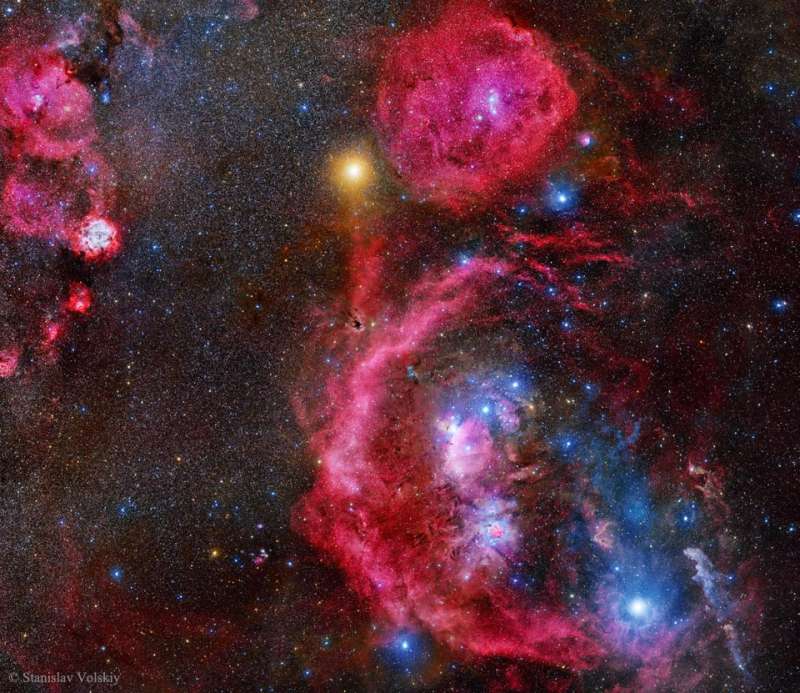 |
Астронет: Астрономическая картинка дня Орион с экспозицией в 212 часов http://astronet.msu.ru/db/msg/1636998/eng |
Credit & Copyright: Stanislav Volskiy,
Rollover Annotation: Judy Schmidt
Explanation:
The constellation of Orion is much more than three stars in a row.
It is a direction in space that is
rich with impressive nebulas.
To better appreciate this well-known swath of sky, an
extremely long exposure was taken over many clear nights in 2013 and 2014.
After 212 hours of camera time and an
additional year of processing, the featured 1400-exposure collage spanning over
40 times the
angular diameter of
the Moon emerged.
Of the many interesting details that have become visible, one that particularly draws
the eye is
Barnard's Loop, the bright red circular filament arcing
down from the middle.
The Rosette Nebula is not the giant red nebula near the top of the image --
that is a larger but lesser known nebula known as Lambda Orionis.
The Rosette Nebula is visible, though: it is the
red and white nebula on the upper left.
The bright orange star just above the frame center is
Betelgeuse, while the bright blue star on the lower right
is
Rigel.
Other famous nebulas visible include
the Witch Head Nebula,
the Flame Nebula,
the Fox Fur Nebula, and, if you know just where to look,
the comparatively small Horsehead Nebula.
About those
famous three stars that cross the belt of
Orion the Hunter
--
in this busy frame they can be hard to locate, but a
discerning eye will find them just below and to the right of the image center.
Authors & editors:
Robert Nemiroff
(MTU) &
Jerry Bonnell
(USRA)
NASA Web Site Statements, Warnings,
and Disclaimers
NASA Official: Jay Norris.
Specific
rights apply.
A service of:
LHEA at
NASA /
GSFC
& Michigan Tech. U.
